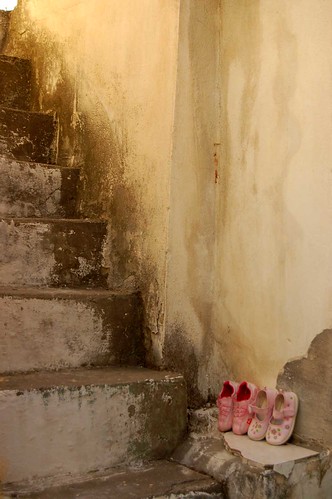Sunday, December 9, 2007
photo assignment - Ecology and Texture
Ecology and Texture
film due Dec. 17
You have two assignments to complete with this roll of film. The first being “Ecology”, the second being “Texture”
1.Ecology
“ecology” can be defined as "the comprehensive science of the relationship of the organism to the environment."
Find a subject that tells a story about how we effect our environment in a positive or a negative way. You are documenting the impact of the organism (people) on its environment. The impact could be good or bad. Take your time to think about the subject matter and what exactly the story is that you want to tell.
Take your time to focus your camera, adjust the aperture and shutter speed depending on your needs. Take your time to frame the subject in a way that the viewer is not distracted by extraneous objects or too much negative space. Create a strong focal point, remember the rules of composition.
Shoot a couple different concepts.
2.Texture
“texture” refers to the properties of and the sensations caused by the external surface of objects received through the sense of touch. It can be rough, grainy, smooth, slimy, soft, scratchy, shiny, furry, etc. Think of the contrast between sandpaper or silk.
Texture tells us about the nature of a subject, whether it's the rough surface of a straw hat, or the silky smoothness of satin. The light that reveals an object's texture also gives us a sense of its dimensionality.
Strong, direct light that rakes across an object from the side (called side lighting) emphasizes its surface characteristics in sharp detail, and creates a pattern of highlight and shadow. When shooting outdoors, it's a good idea to shoot early in the morning or late in the afternoon, when sunlight skims across a subject at a low angle. If you're taking pictures indoors, you can position lights this way, at any time you wish. All you need to do is to place the main light so that it lights the subject from one side.
Find objects or subjects with interesting textures, a grouping of contrasting textures, a grouping of similar textures... something that you find interesting. Remember the rules of composition!
You will print two photographs from this roll, one “Ecology”, one “Texture”
film due Dec. 17
You have two assignments to complete with this roll of film. The first being “Ecology”, the second being “Texture”
1.Ecology
“ecology” can be defined as "the comprehensive science of the relationship of the organism to the environment."
Find a subject that tells a story about how we effect our environment in a positive or a negative way. You are documenting the impact of the organism (people) on its environment. The impact could be good or bad. Take your time to think about the subject matter and what exactly the story is that you want to tell.
Take your time to focus your camera, adjust the aperture and shutter speed depending on your needs. Take your time to frame the subject in a way that the viewer is not distracted by extraneous objects or too much negative space. Create a strong focal point, remember the rules of composition.
Shoot a couple different concepts.
2.Texture
“texture” refers to the properties of and the sensations caused by the external surface of objects received through the sense of touch. It can be rough, grainy, smooth, slimy, soft, scratchy, shiny, furry, etc. Think of the contrast between sandpaper or silk.
Texture tells us about the nature of a subject, whether it's the rough surface of a straw hat, or the silky smoothness of satin. The light that reveals an object's texture also gives us a sense of its dimensionality.
Strong, direct light that rakes across an object from the side (called side lighting) emphasizes its surface characteristics in sharp detail, and creates a pattern of highlight and shadow. When shooting outdoors, it's a good idea to shoot early in the morning or late in the afternoon, when sunlight skims across a subject at a low angle. If you're taking pictures indoors, you can position lights this way, at any time you wish. All you need to do is to place the main light so that it lights the subject from one side.
Find objects or subjects with interesting textures, a grouping of contrasting textures, a grouping of similar textures... something that you find interesting. Remember the rules of composition!
You will print two photographs from this roll, one “Ecology”, one “Texture”
Subscribe to:
Post Comments (Atom)



No comments:
Post a Comment